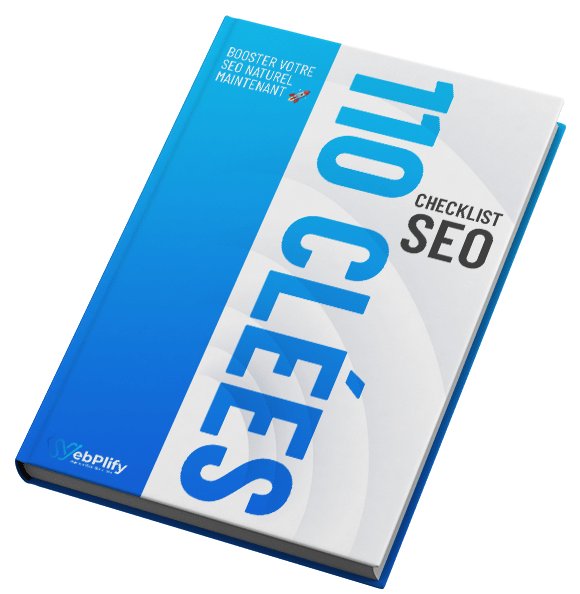Have you noticed that some pages on your website are competing for the same positions in the search engines? SEO cannibalization occurs when several pages on your site compete for the same keywords, diluting their ranking potential in search results. This phenomenon can seriously hamper your SEO strategy by dividing the authority that Google gives to your content. Find out how to identify this problem and what solutions you can implement to prevent your pages from harming each other.
Table of contents
ToggleUnderstanding SEO cannibalization
Definition and basic concept
SEO cannibalization occurs when several pages on the same website compete for the same keywords in search engines. This phenomenon causes a dilution of authority and complicates the work of the algorithms that must determine which page deserves to be positioned. Understanding SEO is important for identifying and correcting cannibalization, which negatively affects your visibility in search results.
When several pages compete for the same keyword, Google struggles to identify the most relevant to users’ search intent. The search engine then divides its “SEO juice” between these pages instead of concentrating authority on a single URL. This can lead to fluctuations in rankings, with different pages appearing alternately for the same queries, reducing the effectiveness of your SEO strategy.
The causes of SEO cannibalization
Several factors contribute to the appearance of cannibalization on a website. The absence of a coherent content strategy is the main source of this problem. Without proper planning of keywords per page, copywriters inevitably end up creating content that overlaps and clashes in search results.
| Cause of Cannibalization | Description | Impact on SEO |
|---|---|---|
| Multiple similar content | Several pages deal with the same subject with minimal variations, diluting the relevance of each. | This reduces the chances of individual pages ranking, and confuses search engines as to which page is most relevant. |
| Poor keyword targeting | Use of keywords that appear different but generate the same search results (e.g. “louer” vs. “location”). | Internal competition for the same queries, preventing a page from being optimally positioned. |
| Content duplication | Presence of identical or very similar content on several pages of a site. | Dilutes authority, wastes Google’s crawl budget, and risks penalties for duplicate content. |
| Inadequate site structure | Lack of logical organization of categories and sub-categories, making it difficult for search engines to understand the content hierarchy. | Difficulty for search engines to identify the most important pages, reducing overall site visibility. |
| Undefined Content Strategy | Lack of planning of keywords targeted by each page, leading to overlapping topics and queries. | Split content creation efforts, reduced organic traffic and lower search rankings. |
In Canada, the cannibalization problem is particularly acute for bilingual sites. These sites must simultaneously manage content in English and French, sometimes with literal translations targeting the same queries. Without proper implementation of hreflang tags and a strategy adapted to the linguistic specificities of each market, these sites run the risk of creating unwanted internal competition.
Impact on natural referencing
Cannibalization directly affects a site’s visibility in search results. When several pages compete for the same positions for a query, Google may choose the least relevant or alternate between them, resulting in a variation in positioning. This volatility reduces click-through rates and fragments potential organic traffic to your site.
The authority acquired through backlinks and user engagement is spread across different pages instead of being concentrated on a single one. This dilution considerably weakens the ranking potential of each page. What’s more, Google’s crawl budget is unnecessarily spent on redundant content instead of exploring and indexing other important pages on your site.
Concrete examples of cannibalization
SEO cannibalization affects all types of websites, from personal blogs to large e-commerce platforms. It usually occurs when a site creates separate pages for slightly different subjects, but which essentially target the same search intent.
- Multiple pages: When several pages on a website target the same keyword, they compete with each other, diluting their ability to rank well. The key is to ensure that each page targets a single keyword or key phrase. So it’s important to have a clear SEO strategy regarding keywords and SEO semantic cocoons.
- Site structure: A poorly structured website and its pages can lead to cannibalization, making it difficult for search engines to understand the relationship between different pages. So it’s important to structure your site properly.
- Similar content: Creating similar or duplicate content on several pages can lead to cannibalization, as search engines have difficulty determining which page is the most relevant. Cannibalized content therefore needs to be reworked.
- Poorly targeted keywords: Poor keyword targeting, using terms that look different but display the same search results, can cause cannibalization. So it’s important to have a clear SEO strategy regarding keywords and semantic cocoons.
A Canadian e-commerce site selling electronic equipment had created category pages and product pages both targeting the term “laptop”. This configuration created an internal competition where the main product page, although more detailed and relevant, was regularly outperformed by a generic category page. This cannibalization resulted in a 30% drop in organic traffic and a reduced conversion rate, as visitors arrived on a page less suited to their purchasing intentions.
Detecting SEO cannibalization
Signs of a cannibalization problem
There are several indicators of SEO cannibalization that need to be identified quickly. A first warning sign is fluctuating positioning in search results. When different pages on a site fluctuate for the same queries, this generally indicates internal competition. A drop in organic traffic despite quality content is also a worrying sign.
Observation of ranking data often reveals a characteristic phenomenon known as “keyword flux”. This constant to-ing and fro-ing of pages in the rankings for the same keyword confuses search engines. Google then struggles to determine which page best responds to users’ search intent. This cyclical and unpredictable behavior is distinguished from other SEO problems by its fluctuating nature, rather than by a constant deterioration in rankings.
Tools for identifying cannibalization
A number of SEO tools can be used to effectively diagnose cannibalization on a website. Google Search Console is the main tool for spotting this problem. By examining the queries for which the site ranks, you can quickly identify competing pages for the same keywords.
More advanced solutions such as Ahrefs, SEMrush and Screaming Frog offer specialized features for cannibalization analysis. These platforms can monitor keyword positions, identify competing pages and analyze the organic traffic of each page. Ahrefs detects common keywords between different website pages. To put an end to these SEO problems, call us today.
Audit methodology for detecting cannibalization
A structured audit methodology is used to systematically identify SEO cannibalization. This approach begins by examining the site’s main keywords and analyzing the pages that rank for these terms. Studying Search Console data and using position tracking tools are essential first steps.
Careful analysis requires assessing the search intent behind each group of potentially cannibalized pages. This evaluation helps determine whether several pages are legitimately serving different needs, or whether they are unnecessarily competing with each other. Comparing the content and metadata (titles, descriptions) of these pages often reveals problematic similarities. Establishing a clear hierarchy between pages dealing with similar subjects is crucial to resolving cannibalization.
Impact of cannibalization on SEO
SEO cannibalization has considerable consequences for a website’s overall performance. When several pages compete for the same terms, search engines struggle to determine which one to highlight. This confusion results in frequent positioning fluctuations and an overall ranking below your real potential. Google interprets this situation as a lack of editorial clarity.
| Site type | Specific impacts | Severity level |
|---|---|---|
| E-commerce | Competition between product pages and categories, lower conversion rate, confusion about purchase intent | Very high |
| Blogs | Dilution of authority between similar articles, reduced visibility in search results | Moderate to high |
| Institutional websites | Competition between similar service pages, difficulty in establishing thematic expertise | Moderate |
| Online media | Competition between news articles on related subjects, scattering of editorial authority | High |
| Multilingual sites | Cannibalization between language versions, particularly problematic in Canada (French/English) | Very high |
Cannibalization dilutes the authority and relevance of affected pages, creating a vicious circle that harms the whole site. When more than one piece of content competes for the same queries, the algorithm hesitates and may give preference to competitors with a more coherent structure. This fragmentation considerably reduces your ability to generate quality organic traffic. Call us today for an in-depth analysis of your site.
Solutions to correct SEO cannibalization
Solving SEO cannibalization problems requires a methodical and strategic approach. There are several complementary methods for remedying internal competition between your pages. The choice of solution depends on the nature and extent of the problem identified. Since every site has its own particularities, thecorrective approach needs to be adapted to your specific situation.
Correcting cannibalization relies mainly on four fundamental techniques: content consolidation, restructuring the site architecture, optimizing canonical tags and implementing redirects. To ensure effective implementation, we suggest first analyzing each cannibalization case to determine which technique is most appropriate. This approach helps to concentrate authority on the main page.
Content consolidation involves merging several pages dealing with similar subjects into a single, more complete and relevant page. This method brings together all valuable information while concentrating authority on a single URL. After merging, the old pages must be redirected to the new version to preserve the accumulated SEO capital. This technique is particularly useful when several blog posts deal with the same subject.
Restructuring the architecture requires a logical reorganization of the page hierarchy. It involves reviewing the site’s tree structure to clearly establish which pages target which keywords. Sometimes it’s as simple as modifying the title and meta description tags to clearly differentiate between similar pages. Restructuring also helps to improve the user experience by making navigation more intuitive.
The use of canonical tags represents an effective technical solution when several versions of a page need to coexist. By indicating the preferred URL to search engines via the rel=”canonical” tag, you direct the “SEO juice” towards the main page while preserving the other versions. This approach is ideal for e-commerce sites with similar products or pages with different URL parameters.
301 redirection is the most radical but often the most effective solution when a page no longer provides unique value. It permanently transfers the authority of one page to another, avoiding confusion for search engines. However, this technique must be used with care, as it modifies the user experience. Call us today for professional help in implementing these solutions.
Keyword strategy to avoid cannibalization
Strategic keyword planning
Careful planning of a keyword strategy is an essential foundation for preventing SEO cannibalization right from the site design stage. Each page must target distinct and specific terms to avoid confusion for search engines. This involves clearly segmenting the expressions to be targeted and establishing a relevant hierarchy between generic and long-tail terms.
To structure your strategy effectively, start by drawing up a comprehensive map of your keywords according to their relevance and search intent. Analysis tools such as Google Search Console will help you identify semantic variations and assign distinct terms to each page.SEO optimization and query allocation is largely based on this judicious allocation of target queries.
The hreflang tag plays an important role in preventing keyword cannibalization, particularly in multilingual websites, by structuring the site correctly. For the bilingual Canadian market, this consideration takes on particular importance. English and French terms must be clearly differentiated to avoid internal competition between language versions of the same page.
Content organization based on search intent
Understanding and respecting users’ search intent is an important factor in avoiding cannibalization between pages. This approach makes it possible to create content that responds precisely to users’ specific expectations, rather than multiplying pages targeting the same query from different angles.
When we analyze search intentions (informational, transactional, navigational), we can adapt the format and content of each page accordingly. Informational queries call for detailed, didactic articles, while transactional intentions require conversion-oriented pages with persuasive elements. This clear differentiation between pages according to their purpose considerably reduces the risk of cannibalization.
For example, a Canadian e-commerce site might have a category page targeting “hiking boots” (rather commercial intent) and separate blog posts on “how to choose hiking boots” (informational intent) and “best hiking boots for Quebec trails” (commercial intent but more specific). This clear distinction between intentions prevents these contents from competing in search results.
Advanced techniques for managing cannibalization
Strategic use of canonical tags
The canonical tag is an essential technical tool for telling search engines which version of a page is preferable. It solves SEO cannibalization by consolidating authority towards a specific URL without redirecting users. This tag is particularly useful when several similar pages need to coexist on your site.
Correct implementation of a canonical tag requires insertion of the code <link rel=”canonical” href=”URL_CANONIC”> in the head section of each duplicated page. However, several common errors can compromise its effectiveness, such as the use of relative URLs or the addition of several canonical tags on the same page. For Canadian e-commerce sites offering product variants, this method helps to concentrate authority on the main page while maintaining accessibility of the different options for users.
Internal linking strategy
Internal links play an important role in prioritizing pages and preventing SEO cannibalization. By strategically distributing authority across your site, good internal linking indicates which pages have priority for each theme. This approach clearly establishes the relative importance of different pages targeting similar keywords.
To optimize your internal linking to avoid cannibalization, identify the main pages for each topic and direct internal links to them from other relevant pages. The use of descriptive and varied link anchors reinforces the thematic relevance of target pages in the eyes of search engines. This strategy concentrates authority on the most important pages, while clarifying your site’s thematic structure for Google and other search engines.
Taxonomy and site structure
A clear taxonomy and logical site structure are important elements in preventing cannibalization between categories and sub-categories. This hierarchical organization makes it easier for search engines to understand the relationship between different pages, and to identify the most relevant content for each query. Effective SEO relies on this solid structural foundation.
For Canadian e-commerce sites, blogs and institutional sites, the silo structure is often the best approach. This method consists of grouping thematically related content into distinct sections, with internal links that reinforce this hierarchy. In the bilingual Canadian context, appropriate use of hreflang tags is crucial to avoid cannibalization between English and French versions of content, a particularly important issue for sites targeting both Quebec and the rest of Canada.
Measure and monitor results after correction
Key performance indicators to monitor
Tracking performance indicators is important after taking corrective action against SEO cannibalization. Important metrics include variations in search engine positioning, organic traffic, click-through rate and number of impressions. This data enables you to accurately assess the effectiveness of your interventions and adjust your strategy accordingly.
After solving cannibalization problems, we generally observe an improvement in search result positions for the pages concerned. Organic traffic increases, while bounce rate decreases. Previously cannibalized pages show greater consistency in their rankings, reflecting the clarity now established for Google’s algorithms regarding the relevance of each piece of content.
Monitoring and analysis tools
Several tools are essential for tracking performance after cannibalization has been corrected. Google Search Console is the main resource for monitoring keyword positioning and analyzing impressions and clicks. Solutions such as SEMrush or Ahrefs effectively complete this monitoring system.
Setting up customized dashboards is important for effectively tracking formerly cannibalized pages. In Google Analytics, create specific segments to isolate traffic to these pages and evaluate engagement metrics. Use SEMrush positioning reports to monitor ranking stability. Also set up automatic alerts to warn you of suspicious fluctuations that may indicate a resurgence of SEO cannibalization or the appearance of new conflicts between similar pages.
Continuous maintenance and monitoring
Constant monitoring is necessary to prevent the recurrence of SEO cannibalization. Set up a quarterly audit schedule to examine keywords that have previously caused problems. This vigilance enables you to quickly identify new instances of cannibalization before they significantly affect your performance in search results.
To maintain a consistent content strategy, establish validation processes before publishing new content. Train your editors and contributors to understand the importance of avoiding keyword cannibalization. Create reference documentation listing the subjects already covered and the keywords associated with each existing page. Set up a system of review by an SEO specialist for content likely to conflict with existing pages. Call us today for personalized advice on implementing these processes.
Case studies and feedback
Successful cannibalization correction
Let’s take a look at some real-life examples of how solving SEO cannibalization problems has transformed website performance. These examples illustrate the significant impact that well-executed corrections can have on organic traffic and search engine rankings.
A Canadian e-commerce site specializing in the sale of outdoor clothing experienced a dramatic increase in organic traffic after resolving cannibalization problems between its category pages and product pages. Initially, their “winter coats” category pages and several product pages targeted the same keywords, creating confusion for Google, which alternated their positioning in search results.
Lessons learned and best practices
Analysis of the various decannibalization success stories reveals some valuable lessons. The common factor in all these success stories is the uniqueness of content and search intent on each page of the website. When each page meets a specific user need, cannibalization becomes virtually non-existent.
Canadian SEO professionals have developed approaches adapted to the specificities of the local market, particularly when it comes to managing bilingual content. The implementation of a rigorous strategy involving the use of hreflang tags, the creation of original content for each language and the optimization of keywords according to regional particularities is proving particularly effective. These methods help avoid cannibalization while maximizing relevance for geolocated searches in the different Canadian provinces.
Common mistakes to avoid
Correcting SEO cannibalization problems may seem straightforward in theory, but there are several common mistakes that can compromise your efforts. A hasty approach without thorough analysis is one of the main pitfalls to avoid. It’s essential to correctly identify cannibalizing pages before applying solutions.
- Ignoring the problem: Failing to identify SEO cannibalization as a potential problem is a common mistake, as it prevents the necessary steps from being taken to correct it. So it’s crucial to recognize cannibalization as an important SEO issue.
- Omit SEO audits: Failure to carry out regular SEO audits to detect cannibalization problems can lead to a build-up of competitive content, damaging overall site performance. It is therefore important to monitor the site regularly.
- Forget optimization: Not optimizing internal links and existing content can worsen cannibalization, as it doesn’t clarify the relevance of each page for search engines. That’s why it’s important to structure your site properly.
- Poor use of canonical tags: Not using canonical tags correctly can prevent search engines from understanding which version of a page is the most important, which can lead to a dilution of authority. It is therefore important to use them correctly.
- Lack of focus on search intent: Failing to focus on a specific search intent and term for each page can lead to unnecessary competition between pages, reducing their ability to rank well. The key is to focus on a specific search intent and term for each page.
Chain redirects and excessive use of canonical tags often create more problems than they solve. These practices can confuse search engines and further dilute page authority. Unplanned modifications to the site structure without an appropriate redirection strategy are also a major risk, as they can generate 404 errors and lose the SEO capital accumulated over time.
To avoid these pitfalls, a methodical approach is essential. Test your solutions on a small sample of pages before deploying them on a large scale. Call us today for personalized advice on solving your specific SEO cannibalization problems.
Detecting and resolving SEO cannibalization is a vital pillar in maximizing your site’s visibility. By preventing your pages from competing for the same keywords, you enable search engines to index your content efficiently. Use analysis tools regularly and establish a coherent content strategy with a unique search intent for each page. Your site will gain in authority, and your organic traffic will naturally improve as a result.
Questions and answers about keyword cannibalization (FAQ)
How do you calculate SEO cannibalization?
SEO cannibalization occurs when several pages on a site compete for the same keywords, diluting their ranking potential. There is no single formula for “calculating” this phenomenon, but rather a process of identification and evaluation. This involves a content audit and keyword research to ensure that each page has a clear and distinct purpose.
Evaluation involvesanalyzing targeted keywords, monitoring SERP positioning, and examining organic traffic. SEO tools such as SEMrush, Google Search Console or Ahrefs help identify competing pages and monitor their performance. A manual check with Google can also reveal which pages rank for a specific keyword.
What are the fundamental pillars of SEO, beyond cannibalization?
Beyond cannibalization, the fundamental pillars of SEO are technique, content and popularity (netlinking). SEO technique refers to the optimization of website structure to facilitate crawling and indexing by search engines, including the correct use of HTML tags and image optimization.
SEO content is the creation of unique, high-quality content that meets the needs and search intentions of users. SEO popularity, often built around netlinking, consists in obtaining quality links from other websites, considered as votes of confidence by search engines.
What are the key stages in a comprehensive SEO strategy?
A comprehensive SEO strategy involves several key steps to improve a website’s search engine positioning. The first step is a full site audit to assess strengths and weaknesses. Next comes keyword research, crucial for identifying relevant terms to target potential customers and create value-added content.
Other steps include the creation of valuable content,on-page optimization of titles and headers, promotion of content via internal and external links, measurement of results with KPIs, and ongoing monitoring and adjustment according to performance and changes in the search engine algorithm.
What are the different types of SEO?
The different types of SEO include on-page SEO, which optimizes the website directly, and off-page SEO, which focuses on off-site optimizations such as the creation of backlinks. Technical SEO optimizes the site’s structure to make it easier for search engines to crawl.
There’s also local SEO, to improve visibility in localized searches, e-commerce SEO, specific to online sales sites, and international SEO, to improve visibility in different countries. Other more specialized types include image, video, voice and AI search SEO.















